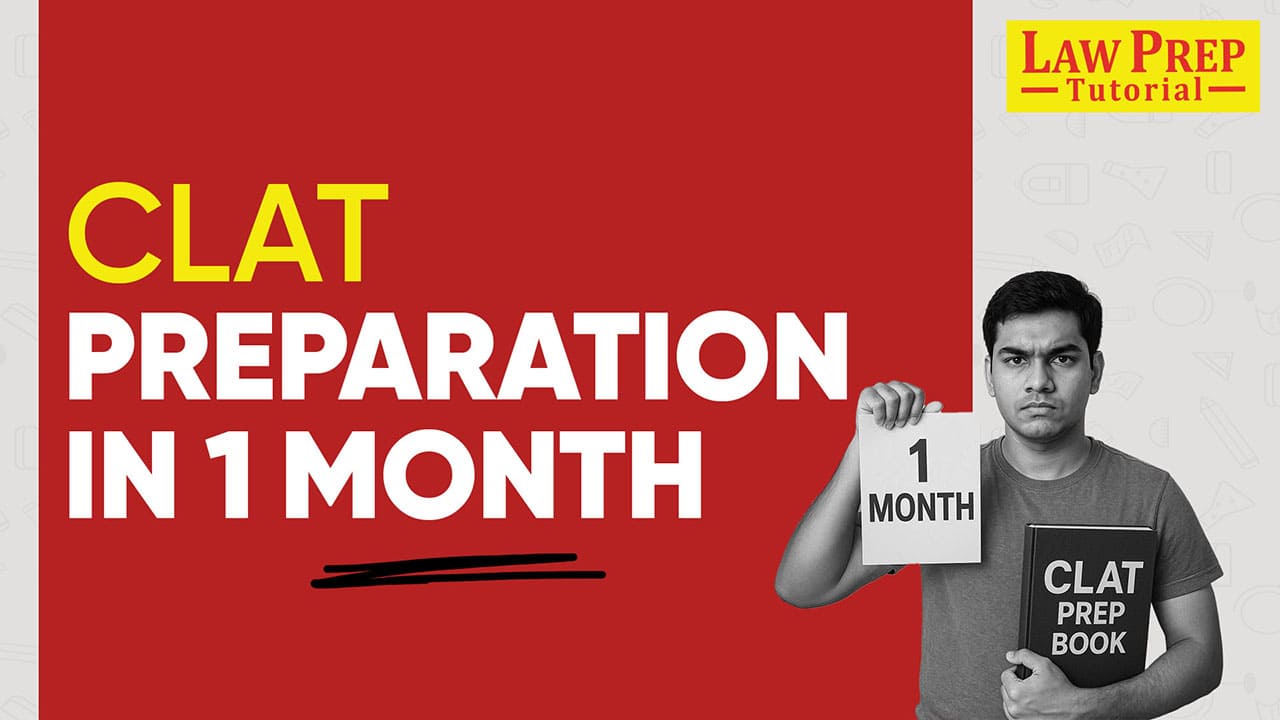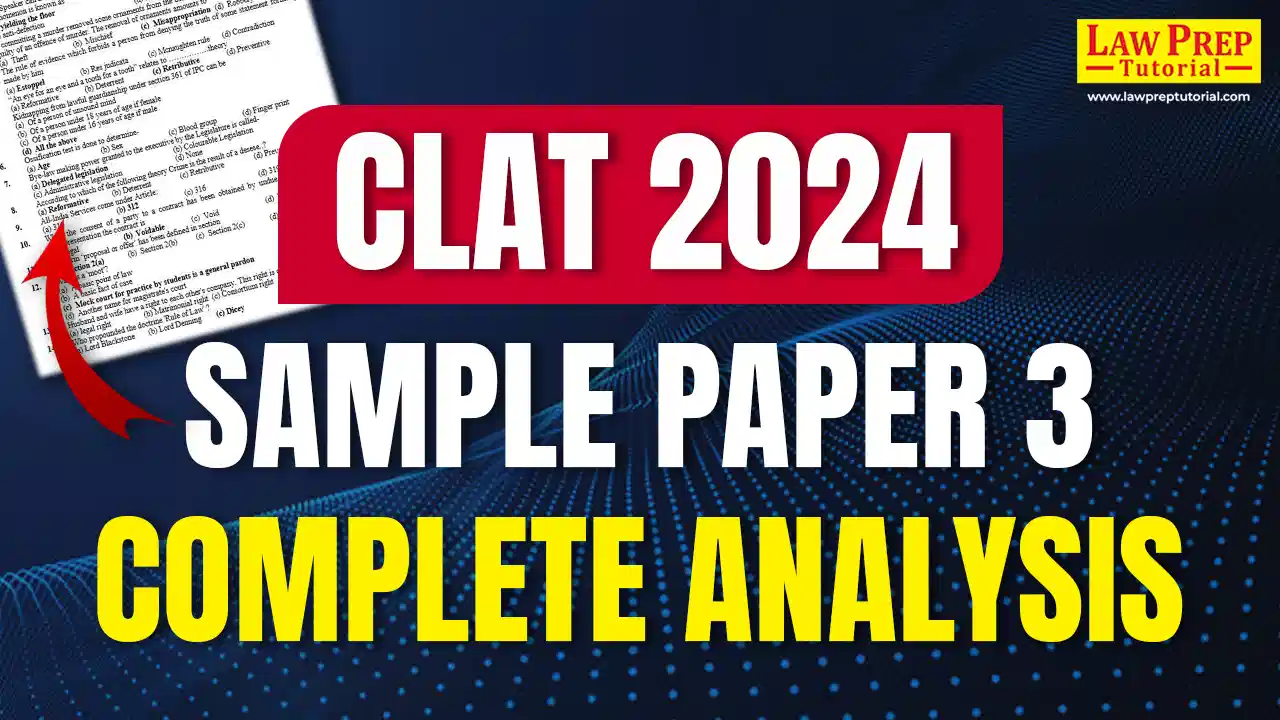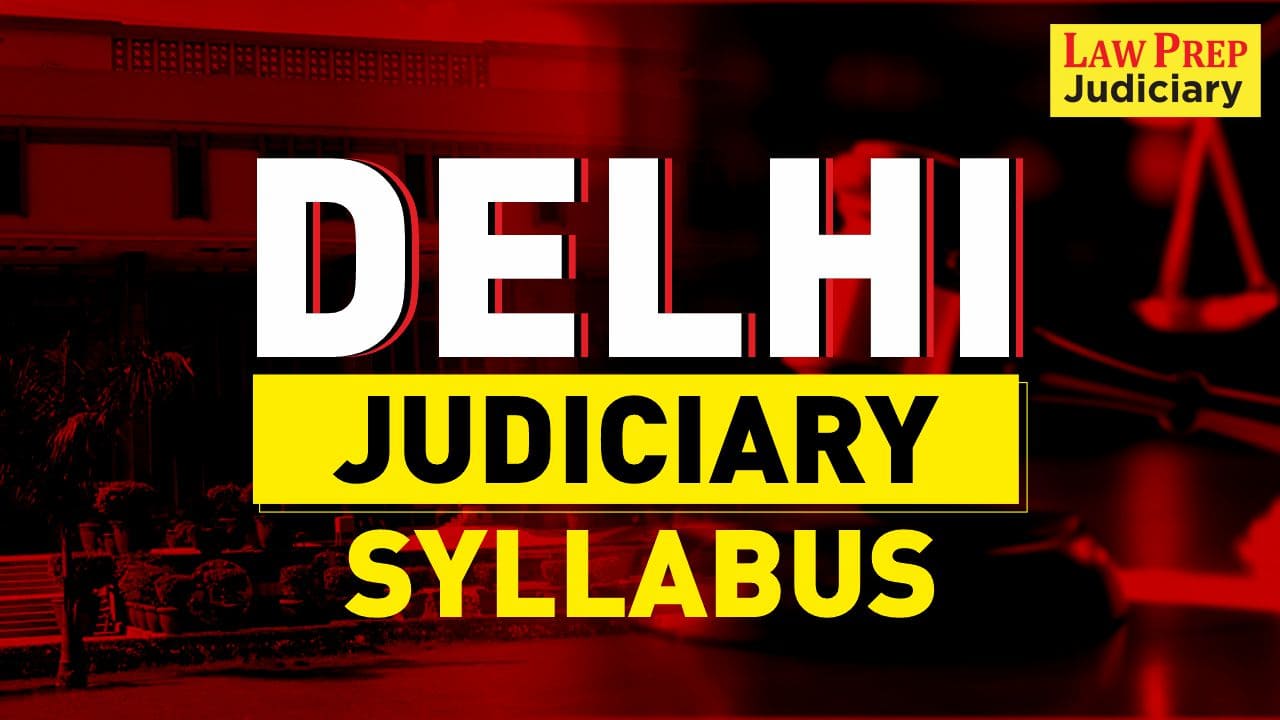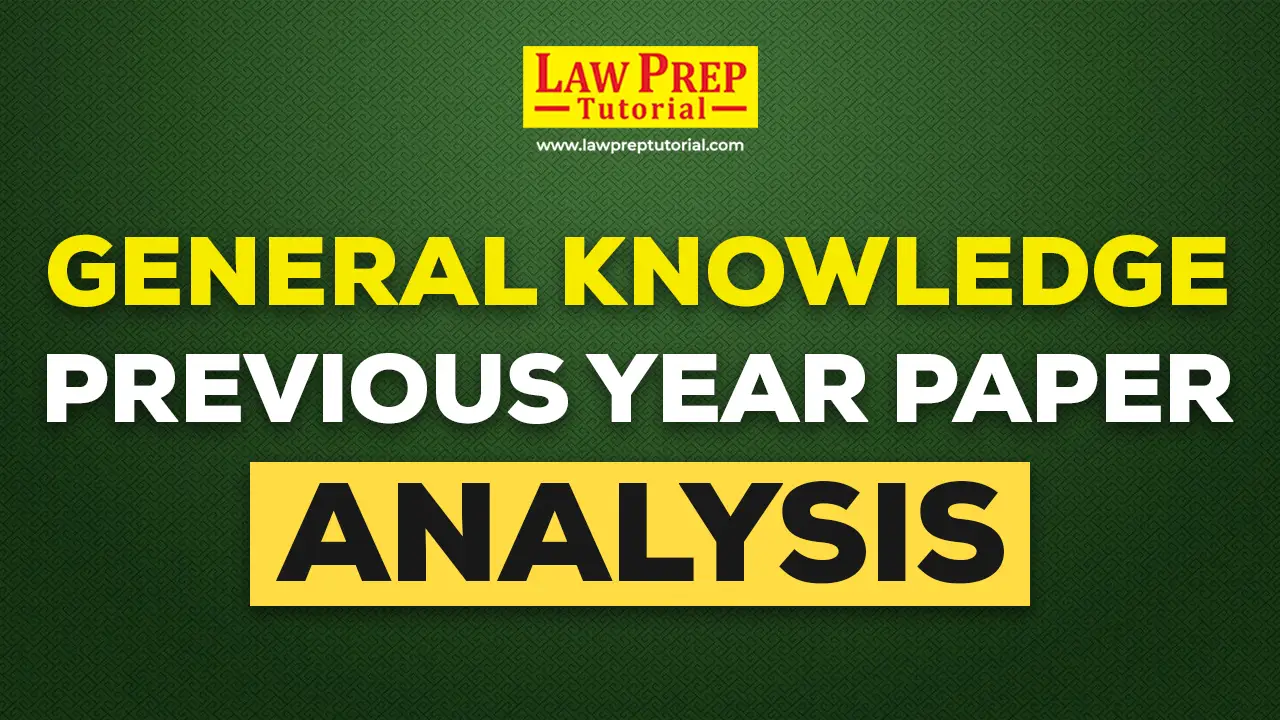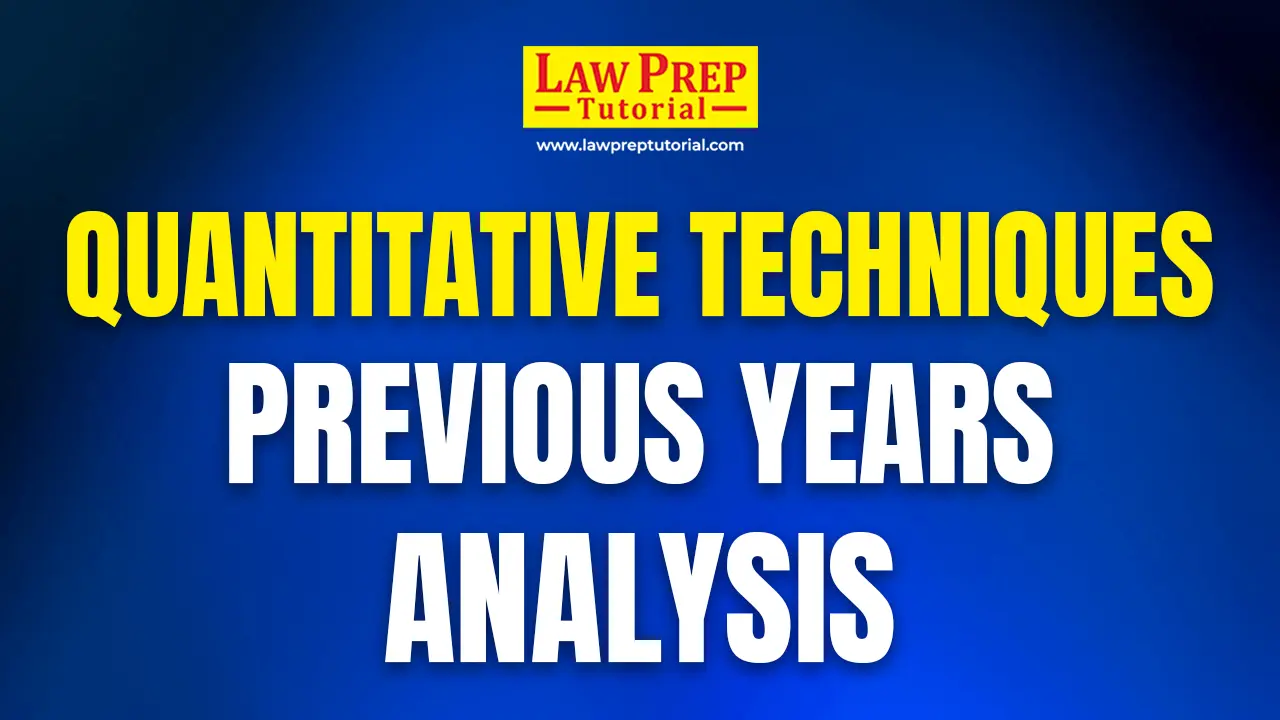As we know, the CLAT exam is conducted by the Consortium of NLUs, but there is an exception. The National Law University of Delhi is not a part of the NLU Consortium. If you wish to study 5-year B.A.LL.B. (Hons.) program for the academic year 2026-27 at the National Law University (NLU), Delhi, you need to clear the All India Law Entrance Test (AILET) exam.
Yes, you read it right.
AILET exam is solely conducted by the Delhi National Law University. So to get admission to the Delhi NLU, you have to clear the AILET exam only. Your CLAT scores will not be considered at the time of admission to the National Law University of Delhi.
Clearing the AILET examination is not a piece of cake. A lot of preparation and strategy goes into it. Before appearing for the AILET examination, you need to know about the AILET exam pattern, exam mode, type of questions, and more.
The AILET exam date for 2026 is yet to be announced by NLU Delhi. The application process for AILET 2026 has not begun, and the official notification is still awaited. Candidates are advised to regularly check the official website for updates regarding the release of the AILET application form 2026, exam schedule, and deadlines. Stay tuned for the latest information to avoid missing any important announcements about the AILET 2026 registration process and exam date.
The AILET 2026 examination date is yet to be announced and will be confirmed by NLU Delhi through the official notification. You can register for the AILET application form on the official website at https://nationallawuniversitydelhi.in/
You must be perplexed regarding the AILET exam pattern, mode of exam, type of questions, and marking scheme. We are here to clear all your doubts. To know all about AILET exam pattern, mode of exam, type of questions, and marking scheme, read this post till the end. All your doubts will be cleared.
Important Dates for AILET Exam 2026
| Particulars | Dates |
| Exam Notification | To Be Announced |
| Application Form Start Date | To Be Announced |
| Application Form Last Date | To Be Announced |
| Admit Card | To Be Announced |
| Date of Exam | To Be Announced |
| Official Website | https://nationallawuniversitydelhi.in/ |
Also Read: NLU Delhi Cut-off Marks
AILET Exam Pattern 2026
Here is the most recent AILET exam pattern:
AILET will include 150 questions in total and will be administered offline in English. The AILET 2026 will be objective based questions.
| Particulars | Details |
| Mode of Examination | Offline |
| Duration of Examination | 2 Hours |
| Number of Questions | 150 |
| Total Marks | 150 |
| Language | English |
| Type of Questions | Multiple Choice Questions (MCQs) |
| Marking Schemes | For each correct answer: 1 markFor each incorrect answer: -0.25 marksUnattempted questions: 0 marks |
Each question carries one (1) mark. For each correct response, one (1) mark will be awarded, and for each incorrect answer, 0.25 marks will be deducted. This implies you will lose one (1) mark for every four (4) wrong responses.
AILET Subjects 2026
The number of sections in the AILET exam has been decreased by the NLU Delhi. Earlier, there were five (5) sections i the AILET exam, but now the Delhi NLU has made changes in the number of sections in the AILET exam. The AILET exam now consist of only three (3) sections: English Language, Current Affairs and General Knowledge, and Logical Reasoning.
| Subject | Number of Questions Likely to be Asked | Marks in Each Section |
| English Language | 50 questions | 50 marks |
| Current Affairs & General Knowledge | 30 questions | 30 marks |
| Logical Reasoning | 70 questions | 70 marks |
| Total | 150 | 150 |
Points to Remember :
- It may be noted that in the logical reasoning section, legal principles may be used to test logical aptitude; however, legal knowledge or technical understanding will not be required of any kind.
- If two or more applicants achieve the same marks in the All India Law Entrance Test (AILET), their merit will be evaluated based on higher marks in the AILET 2026 section on LOGICAL REASONING.
- If the merits remain the same, the applicant who is senior will be given preference. If there is still no change in merit, the computerized draw of lots will be considered.
AILET Paper Pattern and Types of Questions
The AILET paper pattern and types of questions are slightly different from those of the CLAT paper pattern and types of questions. Like CLAT, the AILET exam also focuses on passage-based questions for the English Language and Logical Reasoning sections.
Although CLAT frames questions for the General Knowledge and Current Affairs section based on the passage, the Delhi NLU does not follow the same. The Current Affairs & General Knowledge section of the AILET exam will not provide you with passages. There will be one-line facts-based questions.
AILET Passing Marks & Qualifying Marks
The AILET exam’s passing marks are flexible. Based on the total number of seats available and the performance of the applicants in the exam, the cut-off marks for admission to the Delhi NLUs is determined.
The qualifying marks for the AILET exam are also not fixed. They are determined by the National Law University of Delhi on the basis of the number of seats in 5 year B.A.LL.B. (Hons.) program for the academic year 2026-2027 and the performance of the applicants in the exam.
AILET 2023 Cutoff
Expected AILET Exam Cut-Off
The AILET cut-off marks are generally disclosed after the declaration of the AILET Result.
The candidate can visit our official website https://lawpreptutorial.com/ to know about the AILET cut-off marks after the declaration of AILET exam 2026 results.
Also Read: Best Law Colleges in Delhi
Sample Passage
The presentation of the AILET 2023 paper took students by surprise with its unique approach, where the English and Logical questions were derived from a shared passage.
Here we are providing you sample passage for all the three (3) sections of the AILET exam i.e., English Language, Logical Reasoning, and Current Affairs & General Knowledge sections, to give you an idea, what you can expect on the date of AILET examination.
I. Logic is the study of the principles of reasoning. It is concerned with the analysis of arguments, the evaluation of their validity, and the construction of sound arguments. An argument is a group of statements, one of which (the conclusion) is claimed to follow from the others (the premises). For example, the following is an argument:
- All men are mortal.
- Socrates is a man.
- Therefore, Socrates is mortal.
In this argument, the first two statements (premises) are used to support the third statement (conclusion). The conclusion is said to follow from the premises if it is impossible for the premises to be true and the conclusion to be false.
An argument is valid if and only if it is impossible for the premises to be true and the conclusion to be false. In other words, a valid argument is one in which the conclusion follows necessarily from the premises. The argument above is valid because it is impossible for the premises to be true and the conclusion to be false.
A sound argument is a valid argument in which the premises are actually true. In other words, a sound argument is one in which the conclusion follows necessarily from true premises. The argument above is not sound because the first premise is false. Not all men are mortal, because some men, such as Jesus Christ, are believed to be immortal.
Logic can be used to evaluate arguments and to construct sound arguments. It can also be used to solve problems and to make decisions. Logic is a valuable tool for anyone who wants to think clearly and to communicate effectively.
In addition to the basic concepts of validity and soundness, logic also deals with other important concepts such as relevance, ambiguity, and equivocation. Relevance is a property of premises that are related to the conclusion. An argument is said to be relevant if its premises are relevant to its conclusion. Ambiguity is a property of statements that have more than one meaning. An ambiguous statement can be used to support more than one conclusion. Equivocation is a fallacy that occurs when a word or phrase is used in two different senses in the same argument.
Logic is a complex and challenging subject, but it is also a rewarding one. By studying logic, we can learn to think more clearly and to communicate more effectively. We can also learn to solve problems and to make decisions in a more rational way.
Section – A: English
1. Select the appropriate option to fill the blank.
In the line, ‘Logic is a valuable tool for anyone who wants to think clearly and to communicate effectively…’, the writer implies that Logic __________.
(a) is necessary for everyone to learn.
(b) helps to enhance thought process and communication.
(c) is an optional subject that can be mastered.
(d) makes communication more complicated.
Answer: B
Explanation: Reference lines: ‘Logic is a valuable tool for anyone who wants to think clearly and to communicate effectively.’
2. The writer’s use of the phrase ‘Not all men are mortal’ in the passage. What is the most likely tone this indicates?
(a) paradoxical
(b) sarcastic
(c) contradictory
(d) argumentative
Answer: C
Explanation: Reference lines: ‘The argument above is not sound because the first premise is false. Not all men are mortal, because some men, such as Jesus Christ, are believed to be immortal.’
3. Select the option that is true for both (1) and (2) below, according to the passage.
1. A sound argument is one where the conclusion follows necessarily from true premises.
2. Validity of an argument is determined by whether it’s impossible for the premises to be true and the conclusion to be false.
(a) (1) is true but (2) is false.
(b) Both (1) and (2) are true.
(c) (2) is true but (1) cannot be inferred from the text.
(d) (1) is true but (2) cannot be inferred from the text.
Answer: B
Explanation: Reference lines: ‘A sound argument is a valid argument in which the premises are actually true.’ and ‘An argument is valid if and only if it is impossible for the premises to be true and the conclusion to be false.’
4. Substitute the underlined word correctly in the following line from the passage:
“A sound argument is a valid argument in which the premises are actually true.”
(a) real
(b) tangible
(c) authentic
(d) reliable
Answer: C
Explanation: In this context, the word “true” refers to premises that are factually correct or authentic. The word “real” can also refer to something genuine but it may lack the context of factuality needed here. The words “tangible” and “reliable” do not fit in this context, as they refer to something that can be physically touched and something that is consistent respectively.
5. Based on the passage, select the option that uses the concept of “ambiguity”, as discussed in the passage.
(a) All dogs are mammals. Fido is a mammal. Therefore, Fido is a dog.
(b) It’s raining cats and dogs.
(c) She saw the man with the binoculars.
(d) To err is human.
Answer: C
Explanation: The option that correctly uses the concept of “ambiguity” as discussed in the passage is c) “She saw the man with the binoculars.” This sentence demonstrates ambiguity because it can be interpreted in two different ways, leading to potential confusion or different meanings.
Section – B: Logical Reasoning
6. Considering the premises: “All philosophers ponder existential questions,” and “Bertrand Russell is a philosopher,” according to the principles of logic delineated in the passage, which of the following conclusions is valid?
(a) Bertrand Russell ponders existential questions.
(b) Individuals who ponder existential questions are philosophers.
(c) Bertrand Russell may or may not ponder existential questions.
(d) Only philosophers like Bertrand Russell ponder existential questions.
Answer: A
Explanation: Reference Lines from Passage: An argument is valid if and only if it is impossible for the premises to be true and the conclusion to be false.
7. Given the argument: “All living creatures require water to survive. Reptiles are living creatures. Therefore, reptiles require water to survive,” according to the principles of logic explained in the passage, how can this argument be classified?
(a) Invalid because the premises do not necessarily lead to the conclusion.
(b) Sound, as it is valid and the premises are true.
(c) Valid, but not sound because the premises are false.
(d) Irrelevant because the conclusion does not follow from the premises.
Answer: B
Explanation: Reference Lines from Passage: A sound argument is a valid argument in which the premises are actually true.
8. Given the hypothetical scenario where (A) the majority of the birds are eagles, (B) a majority of the birds are pigeons, and (C) no non-bird eagle (an eagle that is not a bird) is a non-bird pigeon (a pigeon that is not a bird), which of the following conclusions can be drawn based on the principles of logic outlined in the passage?
(a) No eagles are pigeons.
(b) Some eagles are pigeons.
(c) All eagles are pigeons.
(d) It cannot be determined.
Answer: B
Explanation: Reference Lines from Passage: An argument is valid if and only if it is impossible for the premises to be true and the conclusion to be false.
9. If a minority of smartphones are laptops and a majority of smartphones are digital cameras, which of the following could be valid based on the logical principles delineated in the passage?
(a) No laptops are digital cameras.
(b) All laptops are digital cameras.
(c) Both (a) and (b).
(d) Neither (a) nor (b).
Answer: C
Explanation: Reference Lines from Passage: An argument is valid if and only if it is impossible for the premises to be true and the conclusion to be false.
10. Consider this hypothetical situation: A majority of chess players are mathematicians. Every mathematician possesses high cognitive skills. Individuals with high cognitive skills are twenty times more likely to solve complex problems than those with lower cognitive skills. The ability to solve complex problems is the sole determinant for winning a chess game. Which of the following conclusion(s) can be logically deduced from these premises?
(a) In a chess tournament, a player with lower cognitive skills will never be able to win.
(b) In a chess tournament, the winner among 20 players can be predicted solely based on the cognitive skills of the players.
(c) In a Sudoku competition, where all participants are mathematicians, the winner among 50 participants can be predicted.
(d) Both (a) and (b) are correct.
Answer: D
Explanation: Reference Lines from Passage: An argument is valid if and only if it is impossible for the premises to be true and the conclusion to be false.
11. Assume that a minority of libraries contain manuscripts. Which of the following statement(s) is not logically valid based on the principles delineated in the passage?
(a) If there are libraries, there are manuscripts.
(b) If there are manuscripts, there are at least 2 libraries.
(c) If there are no manuscripts, there are no libraries.
(d) All of the above statements are valid.
Answer: D
Explanation: Reference Lines from Passage: A sound argument is a valid argument in which the premises are actually true.
12. Consider this scenario: Every software developer is a problem solver. All problem solvers possess analytical thinking abilities. Some software developers are also data analysts. Which of the following conclusion(s) is logically valid given these premises?
(a) All problem solvers are software developers.
(b) Some problem solvers are data analysts.
(c) Every software developer is a data analyst.
(d) None of the above conclusions is valid.
Answer: B
Explanation: Reference Lines from Passage: An argument is a group of statements, one of which (the conclusion) is claimed to follow from the others (the premises).
Section – C: Gk and Current Affairs
1. ‘PoshanBhi, PadhaiBhi’ is the government’s flagship program launched by which of the following Ministries?
(a) Ministry of Women and Child Development
(b) Ministry of Home Affairs
(c) Ministry of Education
(d) Ministry of Rural Development
Answer: A
Explanation: The Union Minister for Women and Child Development introduced the government’s flagship program ‘PoshanBhi, PadhaiBhi’, which focuses on Early Childhood Care and Education (ECCE) at anganwadis across the country. For effective implementation of ECCE, the Ministry has allocated Rs 600 crore for the training of Anganwadi Workers (AWW). The training for anganwadi workers will be provided by, the National Institute of Public Cooperation and Child Development (NIPCCD). To transform anganwadi centers into not just nutrition hubs but also education-imparting centers is the objective of the program. The ECCE progr education in the mother tongue, aligning with the principles of the New Education Policy will be the priority of ECCE program.
2. In which of the following years was the ‘Kisan Credit Card’ Scheme launched?
(a) 1998
(b) 2015
(c) 2008
(d) 2011
Answer:A
Explanation: The Kisan Credit Card (KCC) scheme was introduced in 1998 to provide timely credit support to farmers. It offers credit for cultivation, purchase of agriculture inputs, and other needs. The scheme was extended to cover the investment credit requirement of farmers in 2004. In 2018-19, the facility was extended to fisheries and animal husbandry farmers.
3. Which of the following Constitutional amendment in 1976 added the word ‘secular’ to the preamble of the Constitution?
(a) 44th
(b) 50th
(c) 42nd
(d) 51st
Answer: C
Explanation: The 42nd Constitutional amendment in 1976 added the word ‘secular’ to the preamble of the Constitution. India being a secular state, is a no state religion which means that it follows no particular religion. In Ahmedabad St. Xavier’s College vs. State of Gujarat (1975), the SC held that Secularism neither means anti-god nor pro-god. It just ensures that no one is differentiated on the basis of religion eliminating the concept of God in matters of the state.
4. UNGA had declared the international year 2023 after which of the following cereals?
(a) Millets
(b) Legumes
(c) Rice
(d) Corn
Answer: A
Explanation: The United Nations General Assembly had declared the year 2023 as the International Year of Millets. India’s proposal to observe an International Year of Millets in 2023 was approved by the Food and Agriculture Organisation (FAO) in 2018. This was adopted by a United Nations Resolution for which India took the lead and was supported by over 70 nations.
Objectives: To increase awareness of the contribution of millet to Food Security and nutrition. And, to inspire stakeholders to improve sustainable production and quality of millets. Also, to increase focus on enhanced investment in research and development and extension services to achieve the other two aims.
5. Which of the following countries are the four largest market of medical devices in Asia?
(a) India, China, Thailand, Pakistan
(b) Japan, Russia, China, South Korea
(c) South Korea, Japan, Thailand, China
(d) Japan, China, South Korea, India
Answer: D
Explanation: India is the 4th largest Asian medical devices market after Japan, China, and South Korea, and among the top 20 medical devices markets globally.
India’s current market share in the medical device category is 1.5% of the global space or $11 billion (that is Rs 90,000 crore) in 2020. US dominates the global market with a 40% market share, followed by Europe and Japan at 25% and 15% respectively.
Free Resources



